 | TODAY IN SCIENCE HISTORY
NEWSLETTER - 27 NOVEMBER |
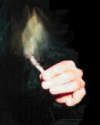 On 27 Nov 1826, John Walker (1781-1859), an English pharmacist from Stockton-on-Tees, invented the first practical, strike-anywhere, friction match, which he first sold on 7 Apr 1827, though he refused to patent his creation. He used three-inch splints of wood, tipped with potassium chlorate, antimony sulphide, and gum arabic. The match head was ignited by drawing it through a fold of fine glasspaper. An article on Matches in the Pharmaceutical Journal (1871) gives an informative history of matches. The use of phosphorus was abandoned as too dangerous. Doebereiner invented a lamp using zinc, sulphuric acid and platinum that produced a flame on demand, like a cigar lighter. As you can read, there was an interesting range of attempts in the history of matches to produce the reliable product as we now know it. On 27 Nov 1826, John Walker (1781-1859), an English pharmacist from Stockton-on-Tees, invented the first practical, strike-anywhere, friction match, which he first sold on 7 Apr 1827, though he refused to patent his creation. He used three-inch splints of wood, tipped with potassium chlorate, antimony sulphide, and gum arabic. The match head was ignited by drawing it through a fold of fine glasspaper. An article on Matches in the Pharmaceutical Journal (1871) gives an informative history of matches. The use of phosphorus was abandoned as too dangerous. Doebereiner invented a lamp using zinc, sulphuric acid and platinum that produced a flame on demand, like a cigar lighter. As you can read, there was an interesting range of attempts in the history of matches to produce the reliable product as we now know it. |
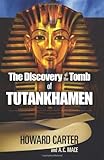 On 27 Nov 1922, Howard carter entered the Antechamber to the tomb of Tutankamun. Today's Science Store pick is: The Discovery of the Tomb of Tutankhamen (Egypt), by Howard Carter, A. C. Mace. Written like a diary, the reader is always in suspense waiting for what will follow next, as the painstaking, step-by-step process of excavation was undertaken. The wonders of the treasure-filled inner chamber are described. In this classic, must-have book, the preceding events and results of the discovery are documented with 106 on-the-spot photographs. It is not simply a description of the tomb or complicated archeological jargon, but was written to inform the curious public. A biography of Lord Carnarvon who financed the expedition, is followed in subsequent chapters by what they knew of King Tut at the time, and the background of the Valley of the Kings and a discussion on the theft of antiquities. It is available New from $0.95. Used from $0.01. (As of time of writing.). On 27 Nov 1922, Howard carter entered the Antechamber to the tomb of Tutankamun. Today's Science Store pick is: The Discovery of the Tomb of Tutankhamen (Egypt), by Howard Carter, A. C. Mace. Written like a diary, the reader is always in suspense waiting for what will follow next, as the painstaking, step-by-step process of excavation was undertaken. The wonders of the treasure-filled inner chamber are described. In this classic, must-have book, the preceding events and results of the discovery are documented with 106 on-the-spot photographs. It is not simply a description of the tomb or complicated archeological jargon, but was written to inform the curious public. A biography of Lord Carnarvon who financed the expedition, is followed in subsequent chapters by what they knew of King Tut at the time, and the background of the Valley of the Kings and a discussion on the theft of antiquities. It is available New from $0.95. Used from $0.01. (As of time of writing.). | | For picks from earlier newsletters, see the Today in Science History Science Store home page. | |
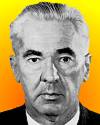 | Mathematics education is much more complicated than you expected, even though you expected it to be more complicated than you expected. - Edward Griffith Begle, American mathematician (born 27 Nov 1914).  |
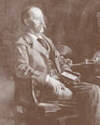 | There is no such thing as absolute truth and absolute falsehood. The scientific mind should never recognise the perfect truth or the perfect falsehood of any supposed theory or observation. It should carefully weigh the chances of truth and error and grade each in its proper position along the line joining absolute truth and absolute error. - Henry Augustus Rowland, American physicist (born 27 Nov 1848).  |
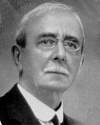 | The brain is waking and with it the mind is returning. It is as if the Milky Way entered upon some cosmic dance. Swiftly the head-mass becomes an enchanted loom where millions of flashing shuttles weave a dissolving pattern, always a meaningful pattern though never an abiding one. - Sir Charles Scott Sherrington, English neurophysiologist (born 27 Nov 1857).  |
| Before you look at today's web page, see if you can answer some of these questions about the events that happened on this day. Some of the names are very familiar. Others will likely stump you. Tickle your curiosity with these questions, then check your answers on today's web page. |
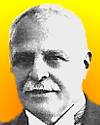 | Giovanni Giorgi, born 27 Nov 1871, was an Italian who proposed a widely used system for the definition of electrical, magnetic, and mechanical units of measurement. He developed the Giorgi International System of Measurement in 1901. Originally, he suggested that the basic units of scientific measurement be the metre, kilogram, second, and joule. In 1960, this system was subsequently endorsed by the General Conference of Weights and Measures, though the joule was replaced by another basic unit.
 What unit replaced the joule? |
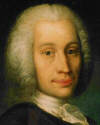 | Anders Celsius, born 27 Nov 1701, was an astronomer, physicist and mathematician who is famous for the temperature scale he developed (often called centigrade scale) for measuring temperature
 What was Celsius' nationality? |
| Richard Christopher Carrington (1875-1826) was an English astronomer who discovered the equatorial acceleration of the Sun; i.e., that it rotates faster at the equator than near the poles. Carrington also was the first to observe a sun flare (1859).
 His observations of which penenomenon led to his discovery of the equatorial acceleration of the Sun? |
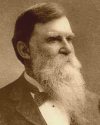 | Clement Studebaker (1831-1901) co-founded a family firm with Henry Studebaker. In 1852, they opened a blacksmith shop in South Bend, Indiana that became the world's largest producer of a certain product. The company, after Clement's death, began building both electric and gasoline powered automobiles.
 What was the major product that established the Studebaker company in the 19th century? |
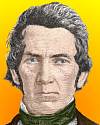 | On 27 Nov of a certain year, the electric motor was invented by American inventor Thomas Davenport. Though several other inventors had experimented with motors, Davenport was the first to secure a US patent for his direct current motor.
 In which decade did Davenport invent his DC motor? |
 | On 27 Nov 1826, John Walker (1781-1859), an English pharmacist, invented the first practical, strike-anywhere, friction match�splints of wood, tipped with potassium chlorate, antimony sulphide, and gum arabic, ignited by drawing it through a fold of fine glasspaper. By 1829, similar matches called “Lucifers” were sold throughout London. Their difference was added sulphur to aid combustion, and white phosphorus. Matchmaking workers quickly developed a bone disease from the phosphorus.
 What was this disease popularly called? |
When you have your answers ready to all the questions above, you'll find all the information to check them, and more, on the November 27 web page of Today in Science History. Or, try this link first for just the brief answers.
Fast answers for the previous newsletter for November 26: Law of Octaves • “tarmac” - asphalt • Howard Carter • France • decade containing the year 1966. |
 If you enjoy this newsletter, the website, or wish to offer encouragement or ideas, please send feedback by using your mail reader Reply button. If you enjoy this newsletter, the website, or wish to offer encouragement or ideas, please send feedback by using your mail reader Reply button.
Your click on a StumbleUpon, Google+ or Facebook social button on the site webpages is also a welcome sign of appreciation. Thank you for using them. |
To find citations for quotations go to the corresponding webpage by clicking on the “quotes” balloon icon. Sources for the thumbnails appear on today's webpage with the corresponding item.
� This newsletter is copyright 2013 by todayinsci.com. Please respect the Webmaster's wishes and do not put copies online of the Newsletter � or any Today in Science History webpage. (If you already have done so, please remove them. Thank you.) Offline use in education is encouraged such as a printout on a bulletin board, or projected for classroom viewing. Online, descriptive links to our pages are welcomed, as these will provide a reader with the most recent revisions, additions and/or corrections of a webpage. For any other copyright questions, please contact the Webmaster by using your mail reader Reply button. |
--
If you do not want to receive any more newsletters,
Unsubscribe To update your preferences and to unsubscribe visit
this link 


 On 27 Nov 1826, John Walker (1781-1859), an English pharmacist from Stockton-on-Tees, invented the first practical, strike-anywhere, friction match, which he first sold on 7 Apr 1827, though he refused to patent his creation. He used three-inch splints of wood, tipped with potassium chlorate, antimony sulphide, and gum arabic. The match head was ignited by drawing it through a fold of fine glasspaper. An article on Matches in the Pharmaceutical Journal (1871) gives an informative history of matches. The use of phosphorus was abandoned as too dangerous. Doebereiner invented a lamp using zinc, sulphuric acid and platinum that produced a flame on demand, like a cigar lighter. As you can read, there was an interesting range of attempts in the history of matches to produce the reliable product as we now know it.
On 27 Nov 1826, John Walker (1781-1859), an English pharmacist from Stockton-on-Tees, invented the first practical, strike-anywhere, friction match, which he first sold on 7 Apr 1827, though he refused to patent his creation. He used three-inch splints of wood, tipped with potassium chlorate, antimony sulphide, and gum arabic. The match head was ignited by drawing it through a fold of fine glasspaper. An article on Matches in the Pharmaceutical Journal (1871) gives an informative history of matches. The use of phosphorus was abandoned as too dangerous. Doebereiner invented a lamp using zinc, sulphuric acid and platinum that produced a flame on demand, like a cigar lighter. As you can read, there was an interesting range of attempts in the history of matches to produce the reliable product as we now know it. 



 What unit replaced the joule?
What unit replaced the joule? 
 What was Celsius' nationality?
What was Celsius' nationality?  His observations of which penenomenon led to his discovery of the equatorial acceleration of the Sun?
His observations of which penenomenon led to his discovery of the equatorial acceleration of the Sun? 
 What was the major product that established the Studebaker company in the 19th century?
What was the major product that established the Studebaker company in the 19th century? 
 In which decade did Davenport invent his DC motor?
In which decade did Davenport invent his DC motor? 
 What was this disease popularly called?
What was this disease popularly called?  If you enjoy this newsletter, the website, or wish to offer encouragement or ideas, please send feedback by using your mail reader Reply button.
If you enjoy this newsletter, the website, or wish to offer encouragement or ideas, please send feedback by using your mail reader Reply button. 

Δεν υπάρχουν σχόλια:
Δημοσίευση σχολίου